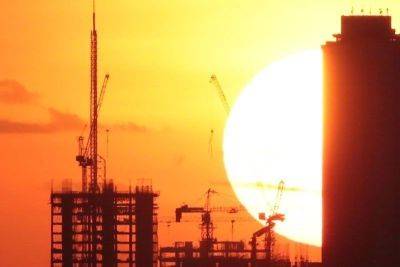Study: Cool paint coatings reduce temperature
A STUDY from Nanyang Technological University (NTU) in Singapore showed that the use of cool paint coatings helps pedestrians feel up to 1.5 degrees Celsius © cooler in urban settings, making the area more comfortable for work and play.
According to the NTU, cool paint coatings contain additives that reflect the sun's heat to reduce surface heat absorption and emission.
These cool paint coatings have been touted as one way to reduce temperatures in cities and mitigate the Urban Heat Island (UHI) effect, a phenomenon in which urban areas experience warmer temperatures than their outlying surroundings.
NTU researchers have conducted a first-of-its-kind real-world study in the tropics to comprehensively evaluate how well cool paint coatings work in reducing city heat.
In a statement provided to The Manila Times, the team coated the roofs, walls and road pavements of an industrial area in Singapore and found that, by comparison with an adjacent uncoated area, the coated environment was up to 2 C cooler in the afternoon, with pedestrian thermal comfort level, cooling down surroundings by up to 1.5 C.
It was measured using the Universal Thermal Climate Index — a common international standard for human outdoor temperature sensation that takes into account temperature, relative humidity, thermal radiation, and wind speed.
«Our study provides evidence that cool paint coatings reduce heat build-up and contribute to the cooling of the urban environment. This is a minimally intrusive solution for urban cooling that has an immediate effect, compared to other options that often require major urban redevelopment to deploy. Moreover, by reducing the amount of heat absorbed in urban structures, we also reduce heat load in buildings, consequently reducing indoor air-conditioning energy consumption,» lead author Dr. Kiran Kumar Donthu said.
AdvertisementMoreover, to carry out their real-world experiments, the NTU researchers selected four rectangular buildings that created two parallel «street canyons» — narrow streets flanked by buildings — in an industrial estate west of Singapore.
One canyon, or «cool canyon,» was coated with cool paints on the roofs, walls, and road pavement,







